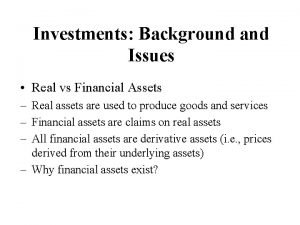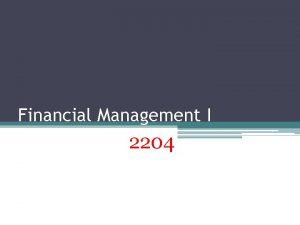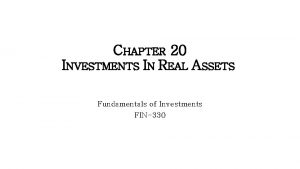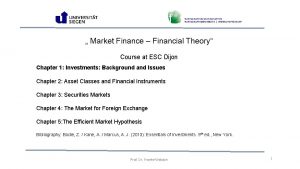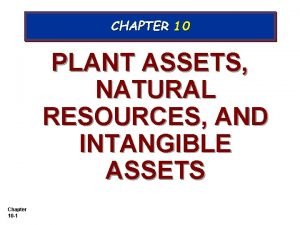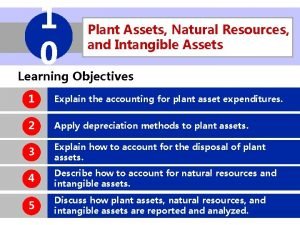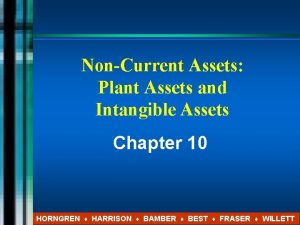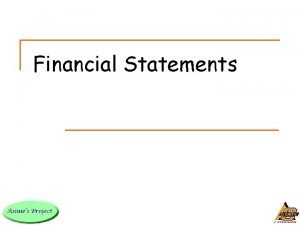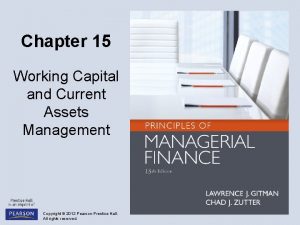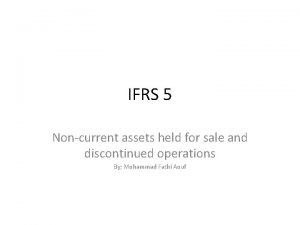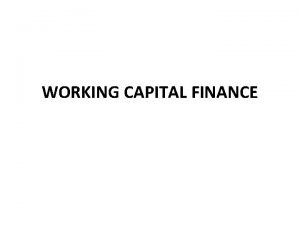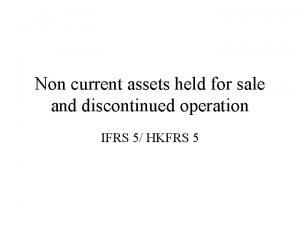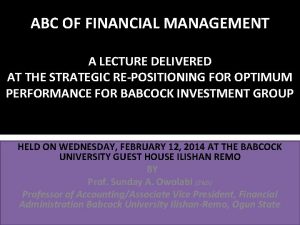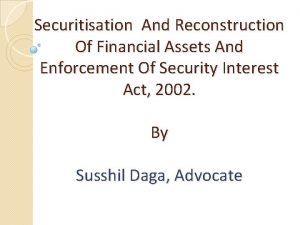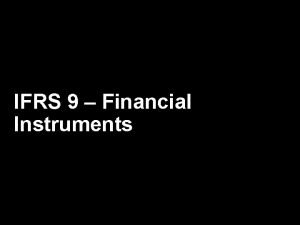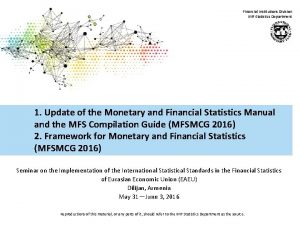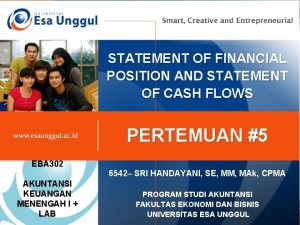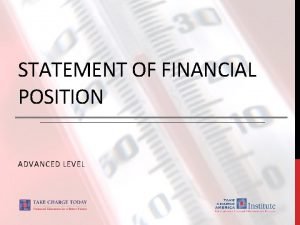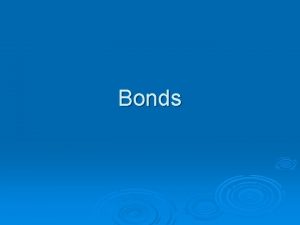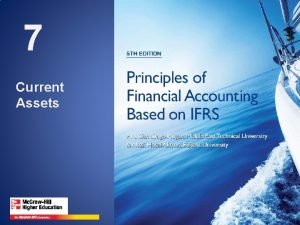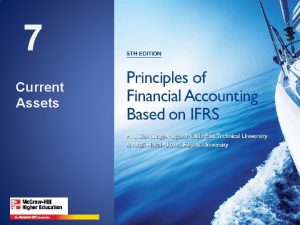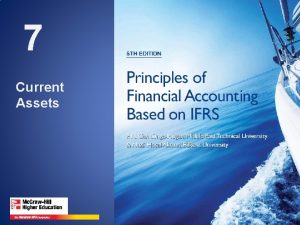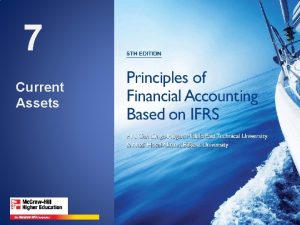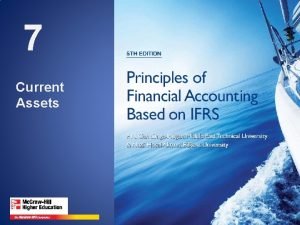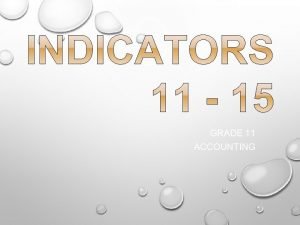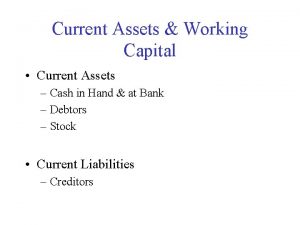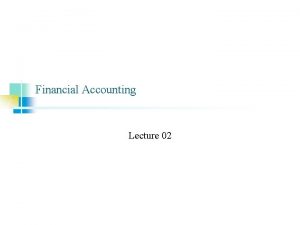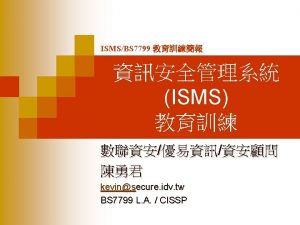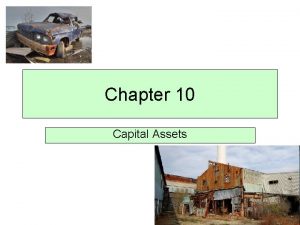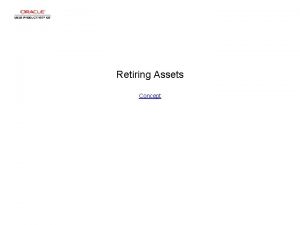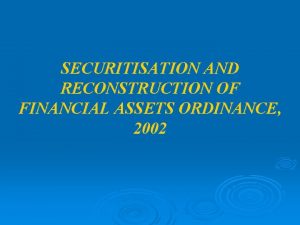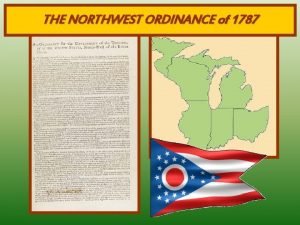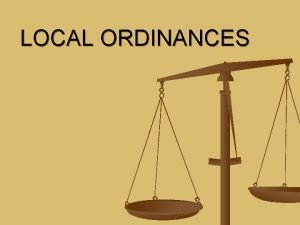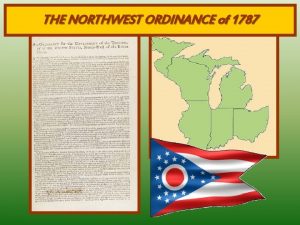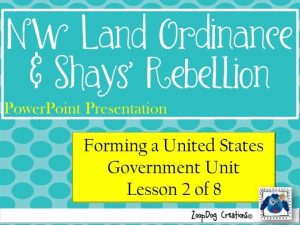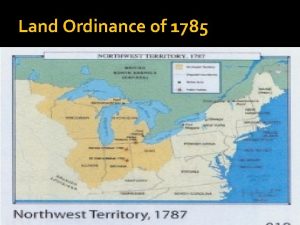Financial Accounting Lecture 13 Current Assets Comp Ordinance

























- Slides: 25

Financial Accounting Lecture 13

Current Assets Comp Ordinance 1984 Fourth Schedule

• Stocks / Inventory • Raw Material • Finished Goods • Work in Process • General Stores / Spares • Tools • Marketable Securities • Loans and Advances • Cash and Bank Balances

• Current assets shall be classified under sub-heads appropriate to the company’s affairs, including, where applicable, the following:

• General Stores and spare parts distinguishing, where practicable, each from the other. • Loose tools Moulds / Dies.

• Stock-in-trade, distinguishing where practicable, between üstock of raw materials and components üwork in progress üstock of finished products and üother stocks

• In the case of above three subheads, the respective basis of valuation shall be stated.

• If the basis such as “cost”, “net realizable value” or cost or net realizable value whichever is lower” is given, there shall also be given to the extent practicable a general indication of the method of determining the “cost” or “net realizable value” e. g. , “average cost”, “first-in, first out” or “last in, first out”.

• Where the basis is of valuation involves departure from the recognized accounting principles, the reasons there for along with financial impact.

• Trade debts which shall include amounts due in respect of goods sold or services rendered or in respect of other contractual obligations but shall not include the amounts which are in the nature of loans or advances.

Classification of Debt: • Debts considered good and debts considered doubtful or bad shall be separately stated. • Debts considered good shall be distinguished between those which are secured and those for which the company holds no security other than the debtor’s personal security.

• Loans and advances due for repayment within a period of twelve months from the date of the balancesheet. • Showing separately those considered good and those considered doubtful or bad debts.

• Trade deposits and short term prepayments and current account balances with statutory authorities. • Bills receivable. • Marketable securities, other than long-term investments.

• Interest accrued or interest outstanding. • Other receivables specifying separately the material items. • tax refunds due from Governments, showing separately excise duties, customs duties, sales tax, income tax etc.

• • Cash and bank balances, distinguishing between. ü Cash in hand, ü Cash in transit and ü balance with banks indicating the nature thereof, e. g. , on current or deposit account Amounts required to be kept in special or separate accounts under any law shall be shown separately.

• In case of trade debts, loans and advances and other receivables following information shall also be disclosed. ü The aggregate amount due by directors, chief executive, and executives of the company and any of them severally or jointly with any other person. ü aggregate amount due by associated undertakings, controlled firms and managed modarabas, names to be specified in each case.

üthe maximum amount of debts under each of the preceding items, at any time since the date of incorporation or since the date of the previous balance-sheet, whichever is the later. Such maximum amounts to be calculated by reference to month-end balance.

• Provision, if any, made for diminution in the value of or loss in respect of any current asset shall be shown as deduction from the gross amount of the respective assets.

• If in the opinion of the directors any of the current assets have, on realization in the ordinary course of the company’s business, a value less than the amount at which they are stated in the financial statements, a disclosure of the fact that the directors are of that opinion together with their estimates of the realizable value and the reasons for assigning higher values in the balance-sheet shall be required.

Current Assets – Disclosures (Samples) • Stores and Spares – Policy Note ü Stores and spares are valued at lower of cost or net realizable value. Cost is calculated using weighted average method. Stores in transit are valued at invoice value. • Notes to the accounts • Notes Stores and Spares Stores in Transit 20 -2 20 -1 xxx xxx xxx

Current Assets – Disclosures (Samples) • • • Trade Debtors Notes to the accounts Notes Trade Debtors Secured Unsecured – Considered Good Associated Undertakings Others – Considered Doubtful Less provision for doubtful debts 20 -2 20 -1 xxx xxx xxx xxx

Current Assets – Disclosures (Samples) • The maximum aggregate amount at the end of any month during the year from associated undertaking was Rs. xxxx.

Current Assets – Disclosures (Samples) • • Advances, Receivables, Prepayments and other Receivables Notes to the accounts Notes 20 -2 20 -1 Advances – considered good Executives xxx Other Employees xxx xxx Suppliers of goods – Considered Good Security deposits xxx Prepayments xxx xxx Due from associated undertaking xxx

Current Assets – Disclosures (Samples) Other Receivables Considered Good Considered Doubtful Less Provision for doubtful balances • • xxx xxx xxx No advances were given to the directors of the company. The maximum aggregate amount at the end of any month during the year from associated undertaking was Rs. xxxx.

Current Assets – Disclosures (Samples) • • Cash and Bank Balances Notes to the accounts Notes Cash at Bank Current accounts Saving accounts Cash in Hand 20 -2 20 -1 xxx xxx xxx
 Real versus financial assets
Real versus financial assets Real assets vs financial assets
Real assets vs financial assets Types of real assets
Types of real assets Lanni products is a start up computer
Lanni products is a start up computer Depreciation expense formula
Depreciation expense formula Plant assets natural resources and intangible assets
Plant assets natural resources and intangible assets Plant assets, natural resources, and intangible assets
Plant assets, natural resources, and intangible assets Financial accounting chapter 1
Financial accounting chapter 1 Management accounting vs financial accounting ppt
Management accounting vs financial accounting ppt Current assets examples
Current assets examples Current assets examples
Current assets examples Myfinancelab solutions chapter 15
Myfinancelab solutions chapter 15 Assets held for sale
Assets held for sale Financing current assets
Financing current assets Current assets
Current assets Overtrading symptoms
Overtrading symptoms 01:640:244 lecture notes - lecture 15: plat, idah, farad
01:640:244 lecture notes - lecture 15: plat, idah, farad Financial assets examples
Financial assets examples Securitization and reconstruction of financial assets
Securitization and reconstruction of financial assets Financial assets ifrs
Financial assets ifrs Imf
Imf Financial goods
Financial goods Financial assets examples
Financial assets examples Accounting statement of financial position
Accounting statement of financial position Statement of financial position assets
Statement of financial position assets Bonds and other financial assets
Bonds and other financial assets
